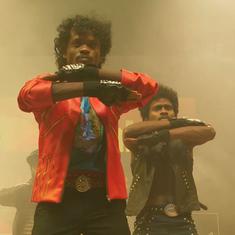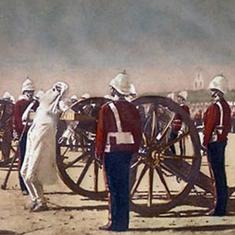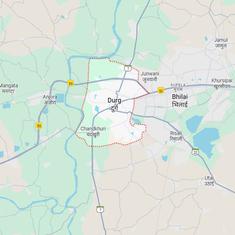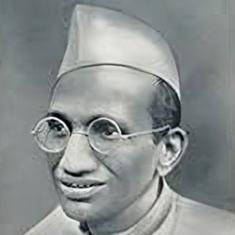It was a busy day in Pulicat, a little town 60 km to the north of Chennai. Set on the edge of the Pulicat lake, Asia’s second-largest brackish water lagoon, the tourism-driven town offered boat rides on the lake with the chance to spot rare migratory birds. Every hour, buses rumbled down its narrow roads carrying picnickers who left behind a trail of trash along the streets. With its bustling fish market and blaring loudspeakers, Pulicat was like any other coastal town.
But this increasingly commercialised town has a past of which little is known. A history involving a clash of colonial powers, a prosperous diamond trade, smuggler’s ships and slavery.
Dutch stronghold

Hidden under a field of brambles behind the Pulicat bus stop, were the ruins of a 400-year-old fort, Castle Geldria. The fort only comprises of a few broken brick structures that are barely visible to public eye. Nobody ventures near the thicket of bushes for fear of snakes. “It’s just a jungle now,” said a local shopkeeper.
This ruined fort was once the seat of power of the Dutch East India Company, or Vereenigde Oost-Indische Compagnie, which arrived in the continent in the 16th century. After gaining control of Masulipatnam of present-day Andhra Pradesh in 1605, Tegenepatnam in 1608, the Dutch made their way to Pulicat in 1610. With their large armed sailing vessels, the Dutch ousted the Portuguese, who had dominated the seaport for several decades after establishing a trading post in 1502. Pulicat was then turned into the Coromandel headquarters of the Dutch East India company.
For almost two centuries, Pulicat was the administrative stronghold of the Dutch, who led a flourishing trade off the Coromandel coast. Hundreds of diamonds were exported to western countries from this port. Thousands of barrels full of fine spices such as nutmeg, cloves and mace were shipped from Dutch settlements in Indonesia and Ceylon to be transported to Deccan India. Indigo, pepper and pearls were traded in bulk across its various settlements. At Pulicat, the gunpowder factory set up by the Dutch proved to be invaluable as they sought to establish their hegemony in the East during the 17th century using arms and ammunition.
But it was for their notorious slave trade that the Dutch were best known. Except for the company records written in Dutch, little information exists about the extent of this trade. Wil O Dijk, an independent researcher, had spent a considerable amount of time in the National Archives of Netherlands, translating documents of the VOC for her PhD at Leiden University. In her subsequent research paper Djik notes: “The ‘master list’ of slaves transported in VOC ships within and from the Bay of Bengal from June 1621 to November 1665 shows a total of 26,885 men, women and children – of which 1,379 died.”

Slave trade capital
Evidence of European slave trade is scant and periodic. It began with Portuguese traders in the 1500s when they transported hundreds of slaves in large cargoes to Portugal, Manila and even Mexico, wrote Richard B Allen, in his book European Slave Trading in the Indian Ocean, 1500-1850.
But the Dutch exceeded their numbers by far. Between 1624 and 1665, the Dutch shipped over 11,000 slaves from Arakan, now known as Rakhine State of Myanmar. Slaves from Bengal and from settlements further in the South at Tegenpatnam and Carcal were brought to Pulicat, clad in dungarees made of coarse cotton cloth and sold at rates that varied each year. A slave in Pulicat could be sold anywhere between 4 guilders to 40 guilders, the currency of the Dutch.
According to Dijk, slaves in Pulicat were occasionally categorised as Muslim, Hindu or even caffers, an offensive term for Black Africans.
Natural calamities resulting in famine, failed harvests and food shortage only led to the growth of the trade. When famines struck, the prices of rice and other food grains rose exorbitantly and the price of slaves became much cheaper. Dijk wrote:
“The insatiable demand by Europeans, especially the Dutch, for slaves thus procured on the South Eastern Coromandel Coast appears to have become well known in the interior, and offered enslavement as an alternative to starvation during times of scarcity and famine. The trade was run mainly by the Dutch at Pulicat who employed brokers at Madras for slave catching. The shipping was done at Madras port itself.”
— Wil O Dijk, Seventeenth-century Burma and the Dutch East India Company, 1634-1680.
Even battles and revolts against rulers led to booms in slave trade. The export of Coromandel slaves spiked during a famine that took place at the time of a revolt in 1645 by the Nayaka Hindu rulers of Thanjavur, Gingee and Madurai against the crumbling Vijayanagara empire. The subesequent invasion of the Bijapur army led to the devastation of fertile agricultural lands of Thanjavur, pushing more people into slavery. In 1646, around 2,118 slaves were exported to Batavia, which is now the city of Jakarta in Indonesia. An overwhelming majority of these slaves were from Southern Coromandel, wrote Dijk, as far as Tondi, Adirampattinam and Kayalpatnam along the Tamil Nadu coast.
“For the Dutch, the Coromandel slave trade was the most useful means of augmenting the supply of labour in their colonies,” Dijk writes. “The Coromandel slaves were reputedly malleable and subject to disciplined control. They were agricultural workers and there was a fair proportion of skilled labourers among them.”
The Dutch slave trade continued towards the end of the 1700s, even with the competing slave trade of the French and the British.
“The traffic was large enough to attract the attention and incur the displeasure of local Mughal officials, as a result of which Governor Elihu Yale and his council banned the purchase and exportation of slaves from Madras and neighbouring ports in May 1688 on pain of a 50-pagoda fine for each slave illegally purchased and exported,” wrote Allen.
Despite the ban, the Dutch slave trade continued sporadically till the end of the 18th century. The British East India company officials were well aware about this, especially in the late 1700s, when the VOC factories in Pulicat, Bimilipatnam (a neighbourhood of Vishakapatnam) and Jaggernatpuram facilitated the acquisition and shipment of slave cargoes to Mauritius and the Reunion. Allen even notes that in 1792, officials from the British East India company in Masulipatnam sent a note to their Dutch counterparts in Jaggernatpuram saying that they had received information that contractors of slave-carrying vessels openly resided in the factory, who had most recently transported 500 people as slaves from the country. “We are also informed that this traffic is openly countenanced by you, and written passes granted, in consideration of which, seven rupees per head is paid for each slave exported,” the note read.
In the 1780s and 1790s, abolitionist sentiments had grown among officials of the British East India company. Correspondence between the Madras Presidency and the Dutch in Pulicat led to the gradual phasing out of slave trade.
Except for the works of a few scholars, very little is known today about this sordid past of Pulicat. Like the ruins of Castle Geldria, it lies buried in a largely forgotten history of Dutch colonial rule in India.










